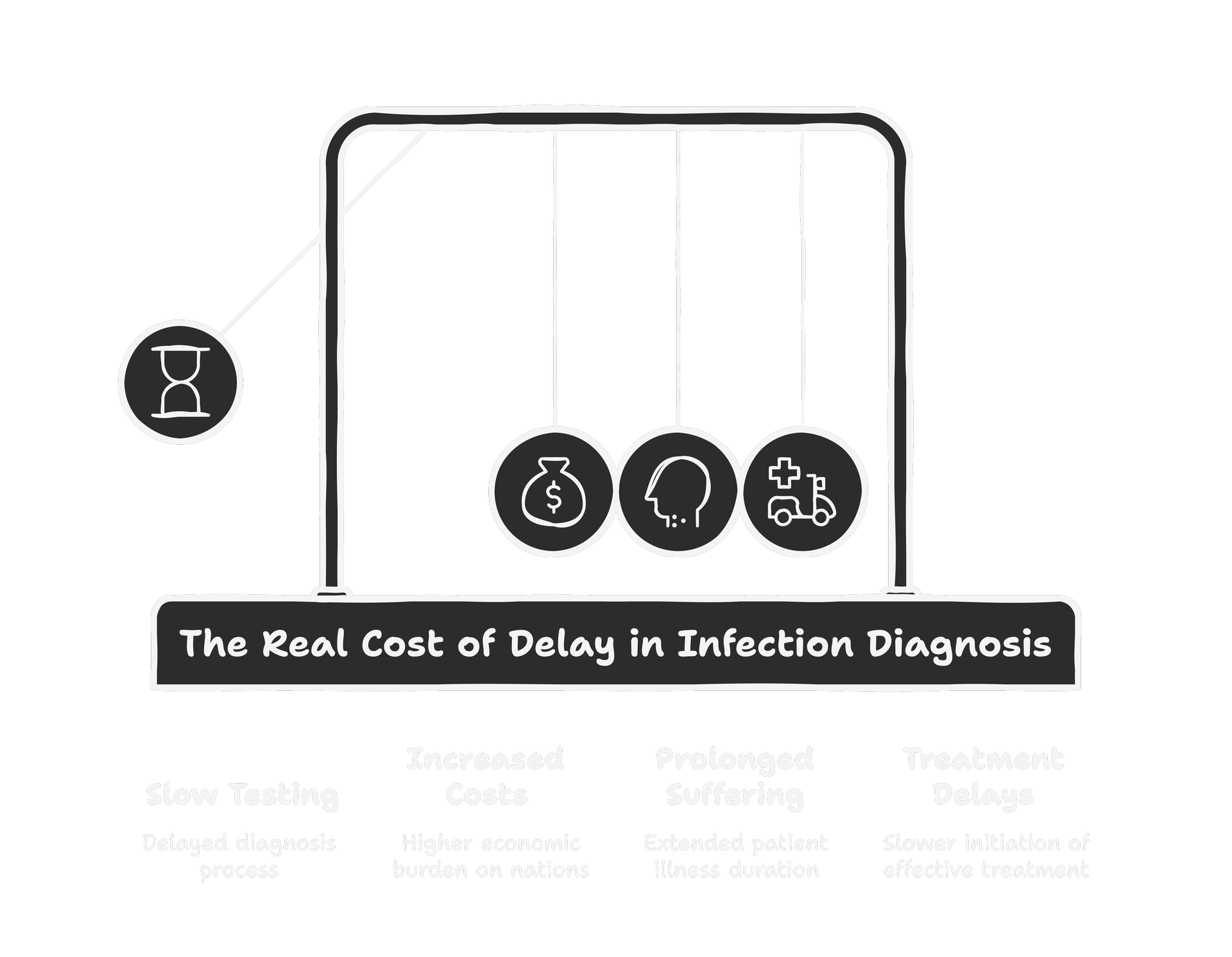Why qPCR & phenotypic testing must be displaced? - Part I

The Problem
If you ever want to know how big a problem is, look at how much it costs. Tuberculosis alone costs India, Africa, and Brazil €300 billion / 27 Trillion INR, a year [1]. That’s just one disease. And it’s not just the economic cost—it’s the time cost, too. Right now, figuring out the right treatment for an infectious disease can take anywhere from 7 to 50 days.
Why? Because today, the gold standard for diagnosing drug resistance relies on a combination of qPCR and phenotypic testing. qPCR tells you what’s there, and phenotypic testing tells you if it’s resistant to drugs. The problem? Neither is fast enough.
The Real Cost of Delay
Every extra day a patient waits for test results is another day:
- They’re getting sicker.
- The infection has a chance to spread.
- They might be on the wrong antibiotics, increasing the risk of drug resistance.

This last part is the most dangerous. Antimicrobial Resistance (AMR) is already here. The WHO estimates that 700,000 people die every year because antibiotics didn’t work for them. If we don’t change how we diagnose infections, that number could hit 10 million per year by 2050 [2].
Where Diagnosis Fails
Right now, diagnosing an infection isn’t just slow—it’s fragmented.
- You run a qPCR test to confirm the presence of a pathogen.
- If it’s positive, you then wait for phenotypic testing to see if it’s resistant.
- Meanwhile, the patient is either untreated, under-treated, or taking broad-spectrum antibiotics that might not even work.
This is how AMR accelerates. The longer we take to get the right treatment, the more bacteria evolve to resist what we throw at them.
What If We Could Fix This?
Imagine if a single test could do what qPCR and phenotypic testing do together—but in ONE clinic visit.
With just one sample, clinicians could get a detailed report that:
- Identifies the infection
- Maps its entire resistance profile
- Provides the right treatment recommendation immediately

The real question isn’t whether qPCR and phenotypic testing need to be replaced. It’s how fast we can do it. It’s not science fiction. I’m working on it—stay tuned for updates!
References: